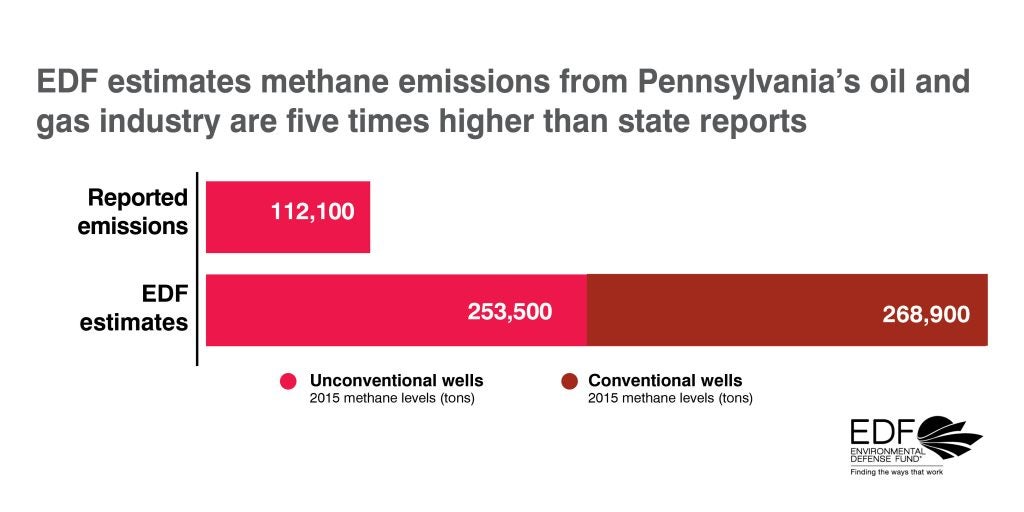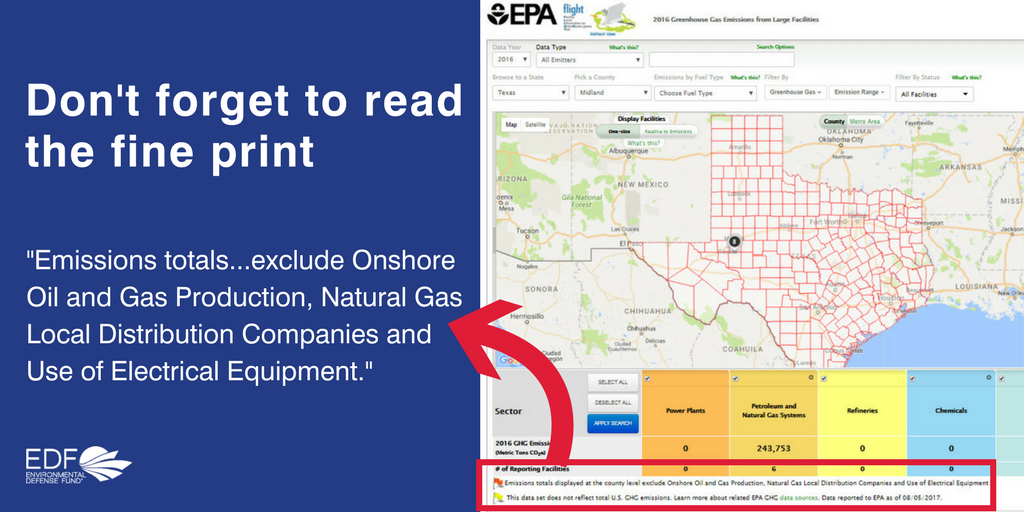Oil and gas front group fails to read fine print on climate pollution…again
Last week, EDF released a new analysis, based on current, peer-reviewed science, that estimates methane emissions from Pennsylvania’s oil and gas sites are nearly five times higher than what industry reports to the state’s Department of Environmental Protection. If you look strictly at emissions from unconventional well sites – emissions are twice as high as what companies report.

For the analysis, EDF reviewed on-the-ground, site-level data collected from Pennsylvania gas sites by researchers at Carnegie Mellon University, and compared that with the methane emissions companies report to the state. (Note: conventional wells are not required to report pollution.)
The findings caught the attention of scientists who have been studying methane in the region, and who confirmed EDF’s analysis lines up with what they have observed in the field.
It also got the attention of the industry front group, Energy In Depth, that tried to discredit the analysis by arguing we should instead reference findings from a “more recent and comprehensive study” (conducted by the same researchers) which, they say, shows emissions are 40% lower.
But when you take a closer look at the 2017 study, it actually confirms EDF’s analysis. Table 5 on page 27 of the study indicates Pennsylvania oil and gas sites emit 58,800 kilograms of methane every hour. When you extrapolate that to see industry’s annual emissions – you get 515,088 metric tons of methane, a figure consistent to EDF’s analysis.
This isn’t the first time we’ve seen these nonacademic industry front groups misinterpret data.
We saw it last month when Texans for Natural Gas incorrectly assessed EPA data to draw erroneous conclusions about methane emissions declining in Texas. But again, when you read the fine print of EPA’s pollution data (which served as the basis for the group’s argument) it doesn’t actually include any information about emissions from drilling sites and other major pollution sources.

There are a number of other industry misinterpretations that don’t even bear repeating. What does deserve attention are the actual facts about Pennsylvania’s methane pollution.
- Controlling methane is one of the most affordable climate solutions available. The International Energy Association (IEA) says we can cut up to half of global methane emissions at zero net cost, making methane controls one of the biggest climate bargains in the energy industry.
- Pennsylvania’s oil and gas industry creates more near term climate damage than all the state’s coal-fired power plants combined. This doesn’t change whether you use data from either the 2016 or 2017 Carnegie Melon studies. The near-term climate impact of the industry’s pollution is on par with emissions generated from 11 coal plants.
- Regulations help reduce pollution. Emissions standards put forward by the Environmental Protection Agency have helped reduce methane. One study conducted by researchers at the University of Texas finds that the pollution controls now required by EPA are effective at reducing 99% of completion emissions. This is partly why we’re starting to see forward thinking companies actually embrace more methane oversight.
- By any reasonable standard, oil and gas industry’s methane emissions are too high. The EPA’s most recent Greenhouse Gas Inventory finds oil and gas companies are making minimal progress in reducing methane – less than 1% reductions per year, and that’s mostly attributed to a production decline. Methane is responsible for about 25% of current global warming, meaning the environmental case for natural gas hinges on getting methane leakage to the lowest rate possible.
Policy makers and companies need data and sound science to make smart choices in managing oil and gas development, unfortunately they are not getting it from some of these trade groups. However, despite these inaccurate and misleading interpretations of climate science, more and more companies and regulators are making methane a priority. Governor Wolf and the Pennsylvania Department of Environmental Protection committed to implement methane controls that will reduce up to 25% of industry’s pollution. Other companies and researchers are collaborating to advance pollution control technology. Despite the policy regression at the federal level, momentum is clearly on the side of addressing methane emissions, a task so important that we can’t let the misinformed or, worse, misleading tactics of special interest groups stand in the way.











